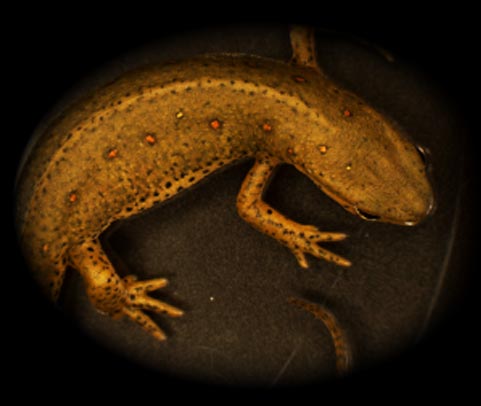Maximina Yun Group
Regeneration of Complex Structures in Adult Vertebrates

© CRTD
Our research programme focuses on three research topics: the mechanisms underlying the plasticity of the differentiated state, the role and regulation of senescence during regeneration and the role of the immune system in regenerative contexts.
I – Mechanisms underlying the plasticity of the differentiated state
The ability of adult salamander tissues to undergo changes in their differentiated state to generate regenerative progenitors is thought to be at the core of the regeneration process. However there is as yet poor understanding of the molecular mechanisms behind this. We have shown that the regulation of p53 is critical to this process (Yun et al, 2013), and that during salamander muscle dedifferentiation MAPK activation is also involved (Yun et al, 2014). These studies have delivered insights that have already been applied in strategies for generating regenerative progenitors in mammalian systems (Wang et al, 2015). Currently, we are expanding the investigation of cellular and molecular factors involved in the regulation of this process using both in vitro and in vivo approaches combined with functional experiments and comparative analysis between regenerative and non-regenerative systems. Together, these studies will speed up the transition from observational findings to a mechanistic understanding of how progenitors are generated during the regenerative programme.
II – Role and regulation of senescence in regeneration
Senescence, like apoptosis, is an important protection against cancer by preventing damaged cells from proliferating. However, unlike in apoptosis, senescent cells persist and have various detrimental effects which lead to age related diseases and regenerative decline. We have recently shown that salamanders, organisms with high regenerative potential and lack of ageing signs, have a highly efficient macrophage-dependent mechanism to clear senescent cells (Yun el al, 2015; Davaapil et al, 2017). Paradoxically though, our work also suggests that senescent cells may have positive roles to play during regeneration. We are currently employing state of the art techniques including transgenesis, live imaging and single cell analysis in order to:
- Probe the specific mechanisms by which senescent cells are efficiently cleared, revealing both fundamental insights into natural regeneration processes and potential therapeutic targets,
- understand how cellular senescence is regulated in time and space during regeneration, and
- first prove and then unravel the exact nature of the positive role of senescent cells in regeneration, shedding light on the basic questions of why senescence persists through evolution and how it is co-opted in the regeneration process.
III – Role of the immune system in regenerative contexts
Beyond its role as a mechanism in senescent cell clearance, we are interested in how the immune system interacts with regenerating cell types in order to mount a successful regenerative response. We are currently developing transgenic, biochemical and in vitro approaches to understand what the exact roles of different immune cell types are during salamander regeneration.
Overall, our research programme seeks to expand our knowledge in these areas, as they are central to understanding how adult regeneration can take place, why certain vertebrates can regenerate whereas others cannot, and how to promote regeneration in non-regenerative organisms.

Future Projects and Goals
The aims of our ongoing and future research are
- Understanding the molecular basis of cellular plasticity
- Role and regulation of cellular senescence in regeneration and tissue repair
- Role of the immune response in regenerative contexts
Methodological and Technical Expertise
- Salamander husbandry and transgenesis
- Cell culture
- FACS
- Immunohistochemistry
- advanced imaging technologies